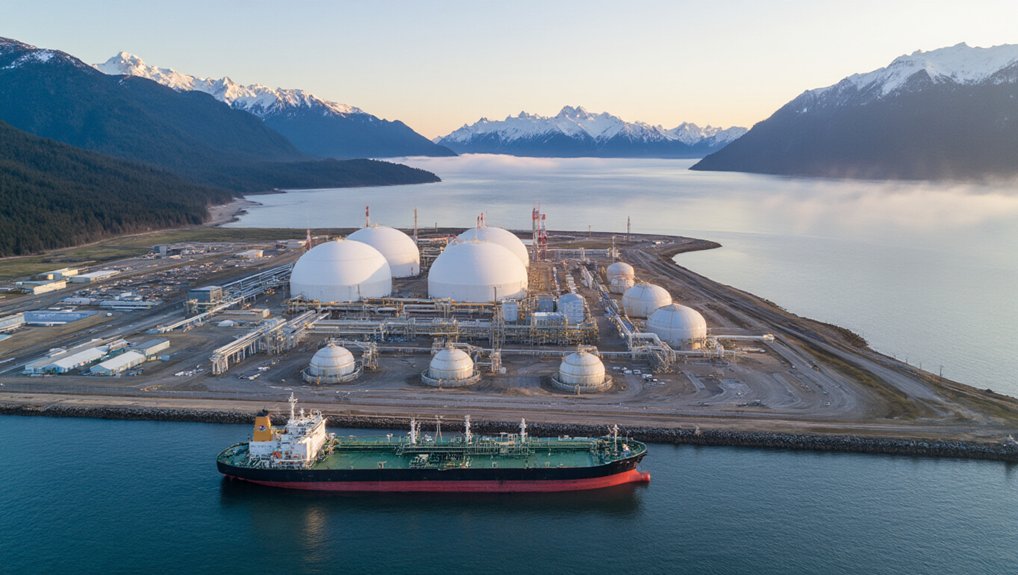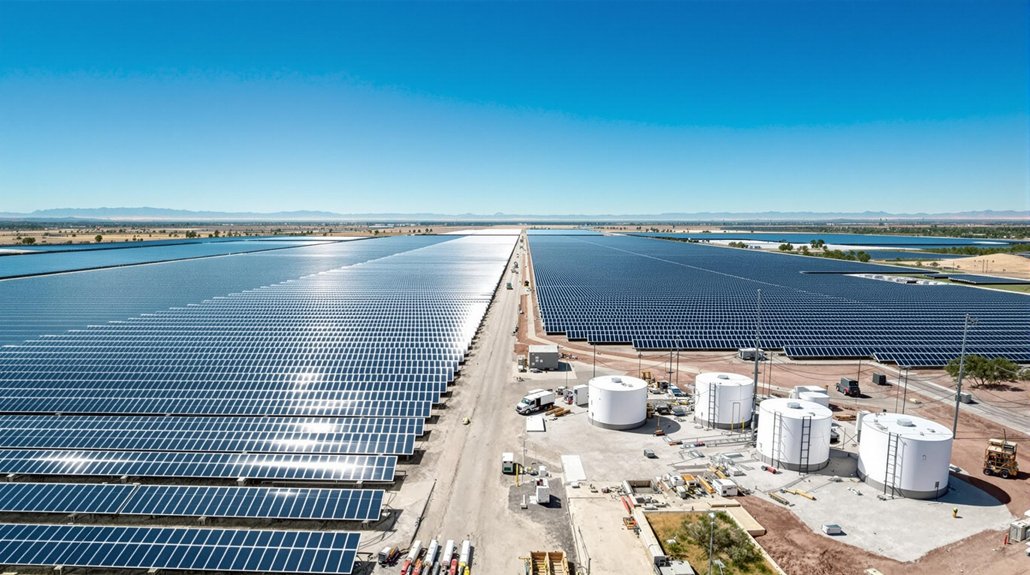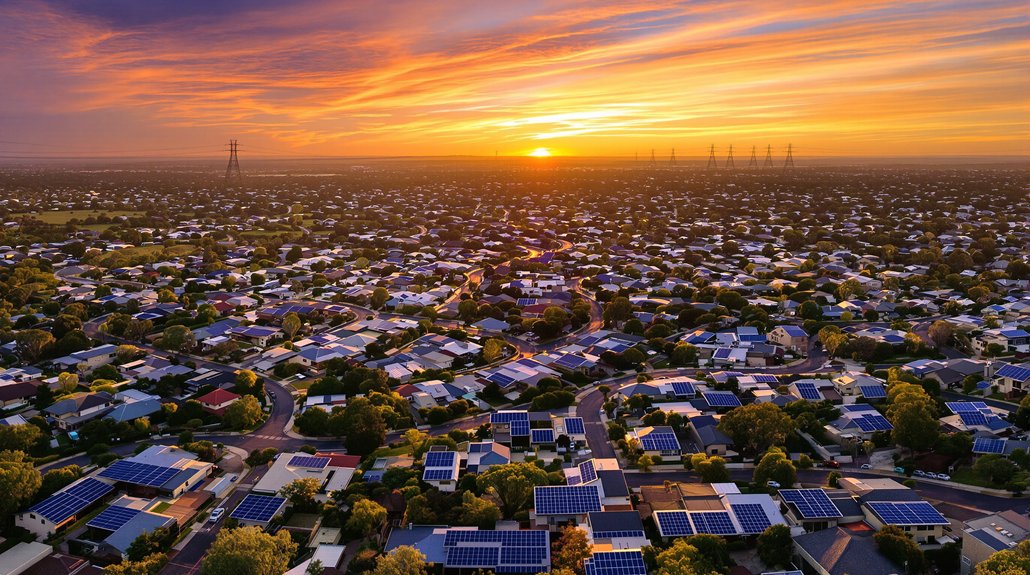After nearly 15 years of planning, licensing battles, and construction, Canada has finally jumped into the global liquefied natural gas game. LNG Canada, the country’s first large-scale export facility, loaded its inaugural cargo in June 2025, shipping it off to enthusiastic Asian buyers. About time, right?
Located in Kitimat, B.C., on Haisla Nation territory, the massive $18 billion facility isn’t exactly small potatoes. With two processing “trains” pumping out a combined 14 million tonnes of LNG annually, it’s designed to run for decades. The Shell PLC-led joint venture took their sweet time, but the project is finally delivering.
This massive $18 billion facility on Haisla land isn’t playing around—pumping out 14 million tonnes annually, Shell’s long-awaited project is finally delivering the goods.
This isn’t just about one facility, though. Six more LNG projects are cooking across Canada, potentially injecting a whopping $109 billion into the economy. Woodfibre, Cedar, and Ksi Lisims LNG are all pushing forward while the first mover enjoys its spotlight.
The Americans, meanwhile, are probably rolling their eyes. They’ve been dominating North American exports for years.
For Canada, this marks a significant shift. For too long, they’ve been married to the U.S. market. Now they’re finally diversifying, with ships heading straight to energy-hungry Asia. The geographical advantage is real – Canadian LNG reaches Asian ports faster than shipments from the U.S. Gulf Coast. That’s just basic geography, folks.
Indigenous partnerships are central to these developments. The Haisla Nation isn’t just watching from the sidelines – they’re key partners. Same goes for the Nisga’a Nation in upcoming projects. Local communities are seeing jobs, not just promises.
Environmental standards are tighter than they were a decade ago. These facilities are being billed as “lower carbon energy” solutions. Whether that holds up remains to be seen, but LNG Canada has become the benchmark for responsible production in the country. The project represents a crucial step for providing a secure energy supply to Asian countries that are working to reduce carbon emissions. First shipments from the Kitimat facility are anticipated to begin by 2029 at the earliest, creating long-term benefits for the region.
The transition from fossil fuels to renewable alternatives could eventually impact LNG demand, but for now, natural gas remains a vital bridge fuel in the global energy mix.
The GasLog Glasgow vessel, carrying that first historic cargo, represents more than just gas. It’s Canada’s long-delayed entrance into a global energy race they almost missed entirely.
References
- https://www.cbc.ca/news/canada/calgary/canada-major-lng-player-1.7571405
- https://financialpost.com/commodities/energy/oil-gas/canada-first-cargo-lng-sets-sail-buyers-asia
- https://boereport.com/2025/06/30/first-cargo-puts-canada-on-the-map-of-lng-exporting-nations/
- https://www.lngcanada.ca/news/first-cargo-puts-canada-on-the-map-of-lng-exporting-nations/
- https://www.rivieramm.com/news-content-hub/gaslogs-vessel-loads-historic-first-cargo-from-lng-canada-85342








